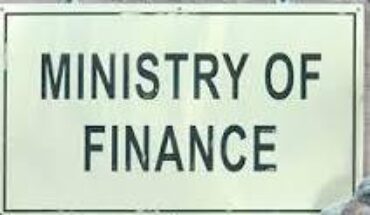By Dominick Rodrigues
Mumbai : when over US$ 6.27 billion was pumped into the real estate sector in FY21, as against US$ 5.8 billion in FY20 – an increase of 19% in one year. Once again, against all expectations, the Indian real estate recorded its highest-ever PE investments since FY16, according to ANAROCK Capital’s ‘Flux – FY20-21 Market Monitor for Capital Flows.‘
Shobhit Agarwal, MD & CEO – ANAROCK Capital, said here recently, “Foreign funds are evidently very upbeat about India. High-grade rental-generating assets have attracted foreign investors in a big way during the year. Moreover, India has a strong underlying demand for office space with quality workforce and average rentals available at less than a dollar per sq. ft. per month.”
“Alongside, the successful REIT listings have provided a good monetising option for PE investors — leading to a stronger demand for good quality rental earning office and retail assets,” he said, adding “Good entry valuation coupled with the option to accumulate a healthy mix of portfolio assets have also driven this surge in foreign PE investments. During the year, PE funds like Blackstone and Brookfield have added a lot of assets to their existing portfolios, while others have taken over loan portfolios of NBFCs.”
Unlike earlier, FY21 saw private equity investors focus majorly on portfolio deals across multiple cities and assets, rather than on specific projects or cities. Such portfolio deals constituted 73% of the overall share, with approx. US$ 4,583 million invested via portfolio deals in multiple cities.
The average ticket size of PE deals rose by 62% in the fiscal year – from US$ 110 million in FY20 to US$ 178 million in FY21. Both structured debt and equity witnessed strong growth during the year at 84% and 15% respectively. Structured debt was largely towards portfolio deals instead of project-level assets.
Though FY21 was an unprecedented year due to the pandemic, foreign PE funds showed much optimism for India. As much as 93% of the total PE investments pumped into Indian real estate came from foreign investors. In actual terms, investments by foreign PE funds almost doubled from US$ 3 billion to US$ 5.8 billion in FY21. In contrast, domestic PE funds invested merely US$ 300 million — compared to US$$ 420 million in FY20.
Among other significant trends, the share of asset classes like commercial, retail and hotel has been very good. While the asset class-wise bifurcation shows lower percentage, when considered along with portfolio deals (where bifurcation is not available), the share of these assets classes is strong. Nearly 66% of the total inflows (US$ 6.27 billion) in FY21 was across portfolio deals in multiple asset classes. In contrast, in FY20, out of the total US$ 5.28 billion total inflows, just 8% of the total comprised of portfolio deals.
Other notable trends included: Among the foreign PE investors that remained major contributors for overall PE inflows in India, Canada and US-based investors pumped in more than 50% of the total foreign PE investments in FY21.
REITs enjoyed wider acceptance in the country; healthy fund raising continued in public market, REIT sizes – US$ 608 million (Mindspace) & US$ 514 million (Brookfield India) REIT.
The Industrial & Logistics sector had strong investor support and key emerging trends in this sector included: rise of automation, urban multi-level warehousing, de-centralization, increasing business consolidation and high demand for Grade A assets.
Data centres are becoming the new sunrise sector, gaining more attention from PE investors and strategic investors.
Last-mile funding gaining momentum – SWAMIH fund and various foreign funds actively evaluating various options. Stressed asset resolution started seeing traction; NCLT cases started to move towards conclusion.






